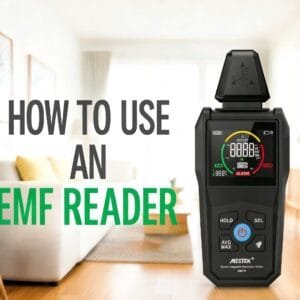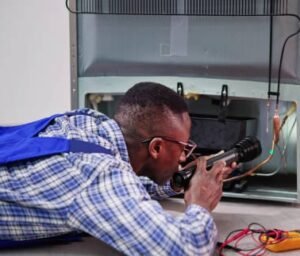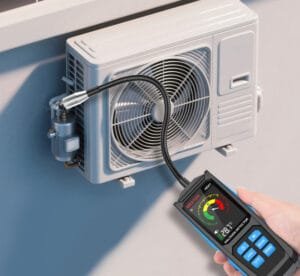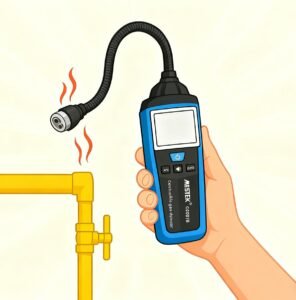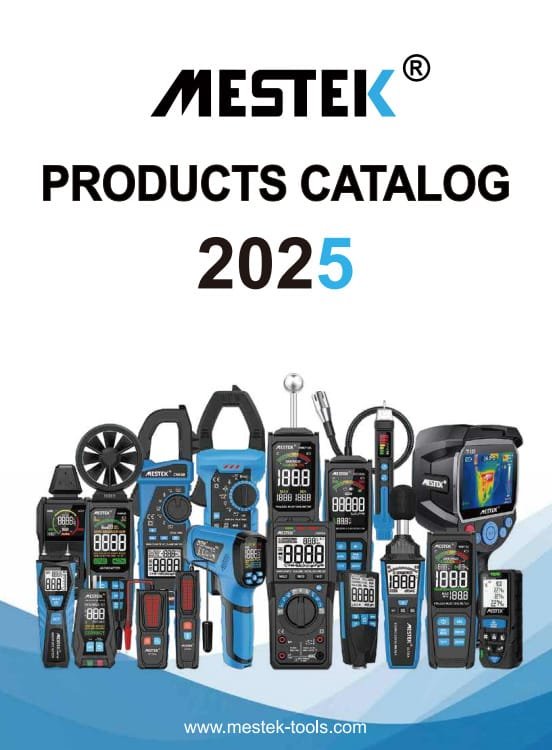Electromagnetic fields (EMFs) are invisible forces surrounding us every day, from smartphones to microwave ovens, Wi-Fi routers and even our walls filled with electrical wiring. We can’t see these fields but they interact with our bodies and environments. The more devices we add to our homes the higher our exposure to electromagnetic radiation becomes.
That’s where an EMF reader comes in. This small device helps you visualise what’s invisible, showing you where EMF levels are highest and helping you take action to reduce exposure. This article will show you how to use an EMF reader effectively, interpret your readings and adopt safety strategies to protect your home from hidden radiation.
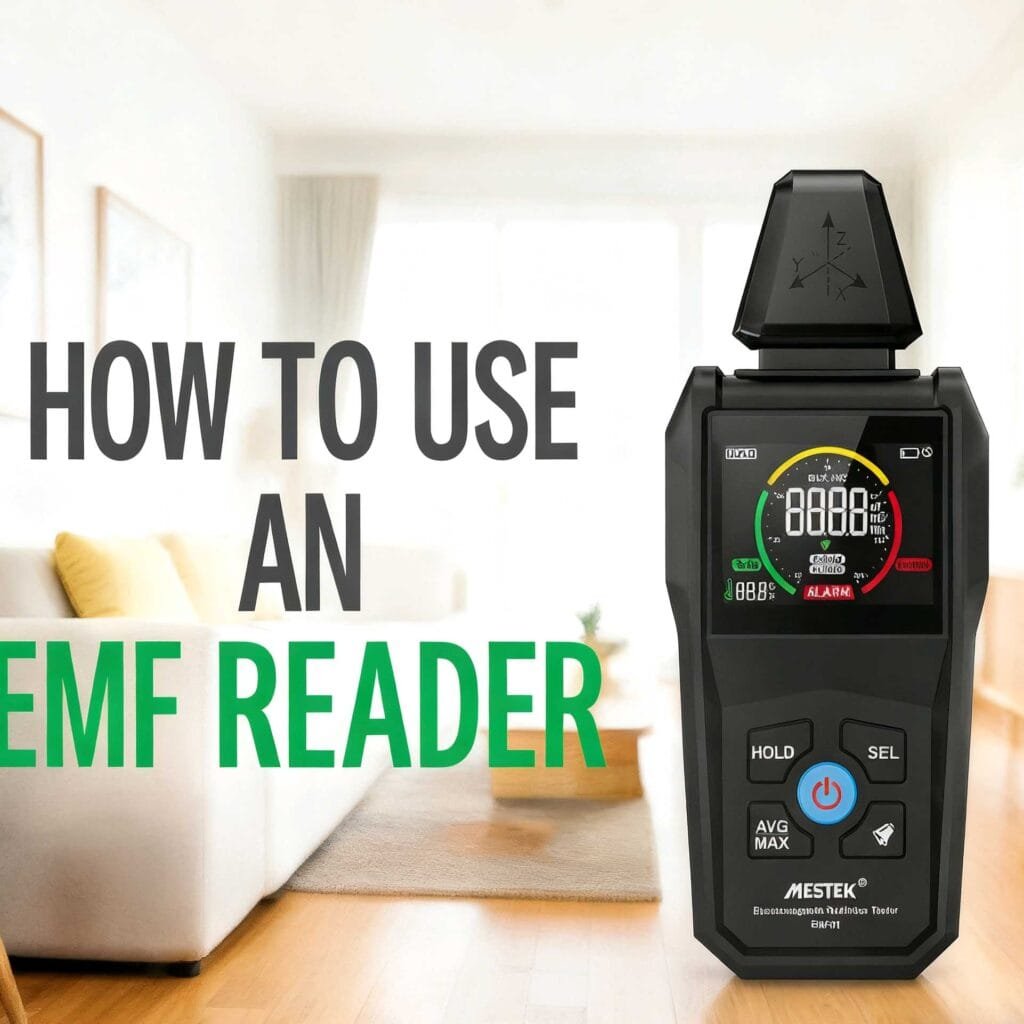
What is an EMF Reader?
An EMF reader, also known as an EMF detector, measures electromagnetic fields generated by electronic devices. These fields are made up of electric and magnetic components that occur naturally (like the Earth’s magnetic field) or from man-made sources (like power lines and electronic appliances).
The purpose of an EMF reader is to detect, measure and display EMF strength in a given area. It gives you real-time readings that help you identify high-exposure zones so you can take action. Many homeowners and office managers use EMF readers to ensure their spaces meet safe radiation standards.
Types of EMF readers
EMF meters fall into two main types based on their measurement capabilities.
1. Single-Axis Meters: These devices measure electromagnetic fields along one axis (direction) at a time. They are more affordable but require the user to tilt and rotate the meter in multiple directions to get a complete reading. They’re ideal for beginners or budget-conscious users.
2. Tri-Axis Meters: Tri-axis EMF readers measure electromagnetic fields across all three axes (X, Y and Z) simultaneously. They provide faster and more accurate results, saving time during scanning. These are often preferred by professionals or homeowners who want comprehensive readings without manual adjustments.
What EMF readers actually detect
EMF readers primarily detect alternating current (AC) electromagnetic fields, from man-made sources like electrical wiring and appliances. They measure different types of electromagnetic energy:
- Electric fields – generated by voltage differences, measured in volts per meter (V/m)
- Magnetic fields – created when electric current flows, measured in microtesla (µT) or milligauss (mG)
- Radio Frequency (RF) fields – associated with wireless communication, measured in various units including milliwatts per square meter (mW/m²)
Standard EMF meters can’t detect direct current (DC) fields, which occur naturally in the Earth’s geomagnetic field. For these measurements you need specialized devices called gaussmeters or magnetometers.
For a deeper dive into electromagnetic field measurement principles, see our detailed guide on EMF detection.
How an EMF Reader Converts Signals into Readings
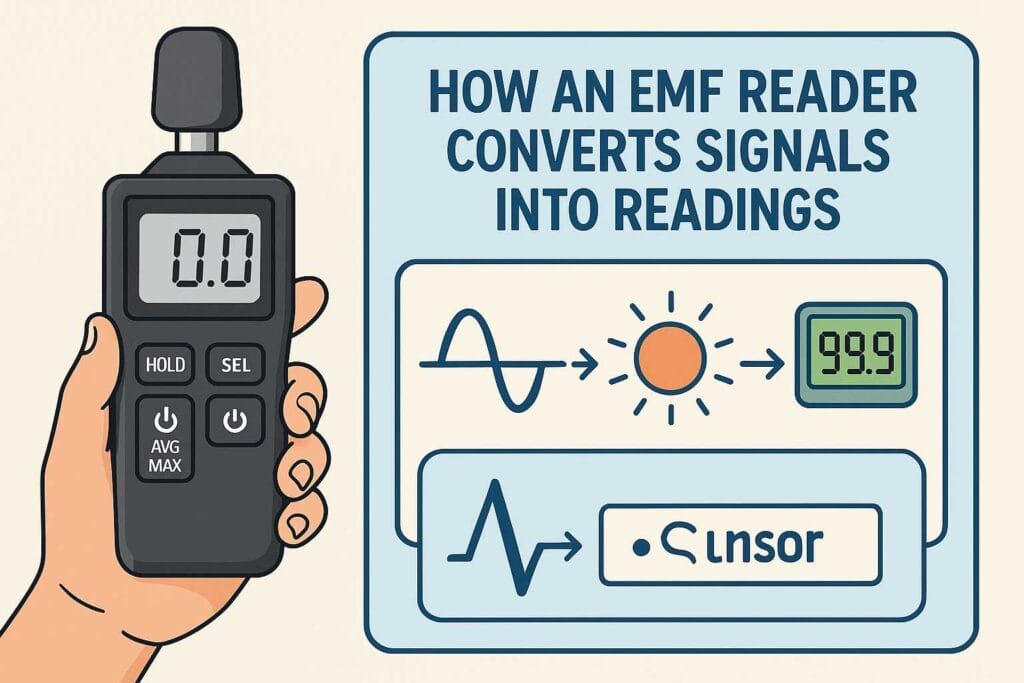
EMF detectors have specialized sensors that detect fluctuations in electromagnetic fields. When placed near an electromagnetic source these sensors pick up the electric and magnetic fields. The device then converts these field strengths into readable measurements displayed as numerical values, color lights or audible alerts.
More advanced EMF readers may have data logging capabilities for extended monitoring. In tri-axis models three sensors are aligned perpendicularly to capture readings from all directions simultaneously, giving you more thorough analysis.
Step-by-Step Guide: How to Use an EMF Reader
Using an EMF reader effectively requires proper technique and understanding of its functions. Master these steps and you’ll be able to detect electromagnetic radiation in your environment. Here’s how to use your EMF reader:
1. Calibrate your EMF reader
First thing to remember, most EMF meters require a brief warm-up period to calibrate properly. Power on your device and let it stabilize before taking measurements. Some advanced readers have auto-calibration features, others need manual adjustment in an area with minimal electromagnetic interference.
2. Select the correct mode (MAG, ELEC, RF)
Modern EMF readers have three measurement modes:
- Magnetic (MAG): For detecting fields from power lines, appliances and motors (40Hz-100kHz)
- Electric (ELEC): For measuring radiation from wall outlets, fluorescent lights and electrical switches* Radio Frequency (RF): For monitoring emissions from cell phones, WiFi routers and microwave ovens (20MHz-6GHz)
3. Hold the device properly for accurate readings
For magnetic field measurements the orientation doesn’t matter. For electric or RF fields, hold the bottom half of the meter and point it away from your body. Don’t cover the top with your hand as this can block the sensors and distort the readings.
4. Move around to detect EMF hotspots
Slowly sweep the detector back and forth as you walk through your space. Move at a steady pace as moving too quickly can create artificially high readings. This methodical approach helps you find “hotspots” where the electromagnetic fields are strongest.
5. Record and compare readings
Take multiple measurements throughout your space. Note locations, times and readings to track patterns and find unusually high exposure areas. This documentation will be useful for comparing the effectiveness of any EMF reduction measures.
6. Understand standard vs weighted modes
Some advanced EMF readers have both standard and weighted measurement modes. Standard mode measures the field strength regardless of frequency, whereas the weighted mode emphasizes higher frequencies above 60Hz which create more electric current inside the human body.
Common Sources of EMF in Homes and Offices
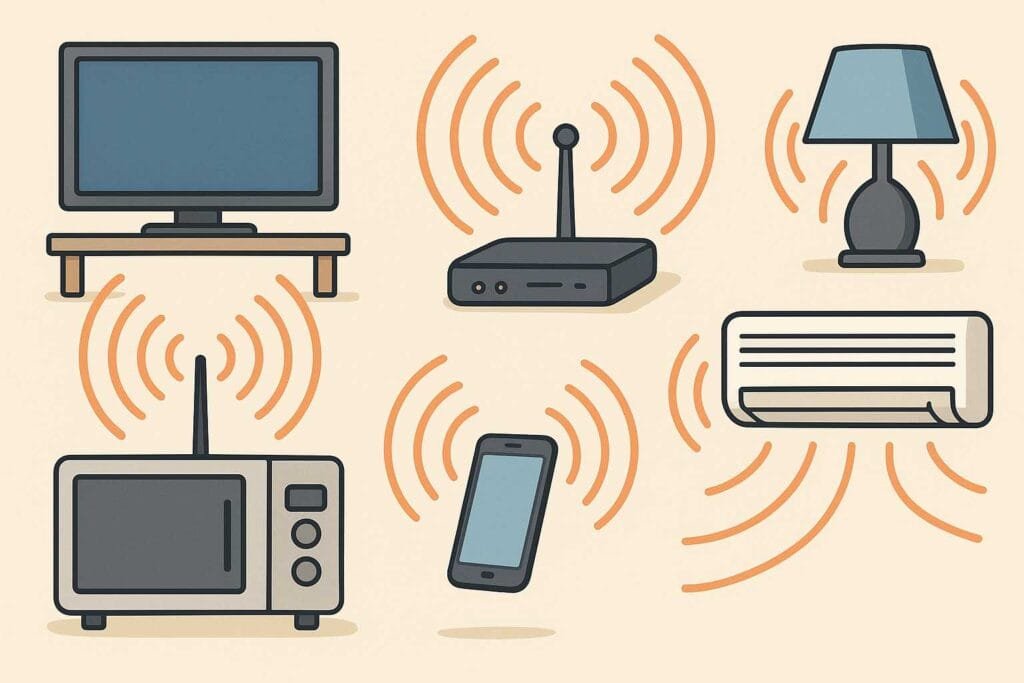
Modern homes and offices have many devices that emit electromagnetic fields at varying levels. An EMF reader can help you identify these sources and measure their radiation output.
1. Wi-Fi Routers
Wi-Fi routers emit radiofrequency electromagnetic fields constantly, at frequencies of 2.4 GHz and 5 GHz. Despite the concerns, measurements show that RF-EMF levels from Wi-Fi devices range from 2 V/m at 1 meter to 5 V/m at half a meter from the router. These values are well below international safety guidelines which set limits at 61 V/m. Placing routers away from frequently occupied areas can further reduce exposure.
2. Mobile Phones
Cell phones emit radiofrequency radiation in the range of 0.7–2.7 GHz. During operation phones automatically regulate the signal strength to the lowest power necessary for connection. The primary effect of RF radiation absorption in humans is localized heating where the phone contacts the body. According to the National Cancer Institute, current research has not found a conclusive link between cell phone use and cancer or other health problems.
3. Microwave Ovens
Microwave ovens operate at 2.45 GHz but feature protective shielding to minimize leakage. Comprehensive measurements found average radiation leakage was just 1% of the specified safety limits at the appliance surface. RF intensity drops rapidly with distance. At 30 centimeters, only 5-10% of the original intensity remains.
4. Laptops and Tablets
Laptops and tablets generate both electromagnetic fields and RF radiation through wireless connectivity. Studies measuring laptop EMF exposure found values ranging from 1.8-6 μT. These levels fall within international protection guidelines but exceed values recommended by some computer monitor emissions standards.
How to Choose the Right EMF Reader for Your Needs?
Choosing the right EMF reader requires understanding several key technical specifications.
Firstly, consider the measuring capabilities of different meters that measure various EMF types (magnetic, electric or RF). Good EMF readers measure multiple fields for a complete assessment.
Secondly, frequency range matters. For home use choose a meter that covers the power grid frequency in your area. For 5G concerns, choose a meter that measures higher frequencies.
Thirdly, the accuracy and sensitivity of the meter determines the reading reliability. Laboratory calibrated sensors ensure accurate measurements, but most home users find a 5-10% error rate acceptable.
Fourthly, consider display features. Some meters use color coded indicators for quick assessment, others provide numerical readings for detailed analysis. Audible alerts help to identify different frequencies fast.
Fifthly, think about user-friendliness. Tri-axis meters measure all 3 spatial dimensions at once, faster than single-axis meters that require manual rotation.
Data logging capabilities prove valuable for tracking exposure patterns over time, particularly for professional assessments.
Safety and Purchasing Advice
When buying an EMF reader, balance quality and price. There are cheap models online but they may lack precision or stability. Good brands like MESTEK are known for producing accurate and easy to use EMF detectors.
Safety Tips for Everyday Use
Even after you have purchased an EMF reader, take practical steps to minimize unnecessary exposure:
- Keep your Wi-Fi router at least 5–10 feet away from sleeping areas.
- Don’t hold your mobile phone directly to your ear for long calls. Use speaker mode or a headset instead.
- Turn off or unplug electronics when not in use, especially at night.
- Use EMF protection materials, such as shielding fabrics or paint, if readings show high levels.
- Do EMF inspections every few months to detect changes in your environment.
FAQs About Using an EMF Reader
1. What does an EMF reader measure?
An EMF reader measures the strength of electromagnetic fields generated by electrical and wireless devices. It detects electric fields (V/m), magnetic fields (mG or µT), and radiofrequency fields (mW/m²) from power lines, appliances and communication technologies.
2. Are EMF readers safe to use around electronic devices?
Yes, EMF readers are passive devices. They only detect radiation; they don’t emit it. You can use them near any household appliance without interference.
3. How often should I check my home for EMF levels?
Do a full inspection every 3–6 months especially after installing new devices like routers, smart TVs or appliances.
4. Can EMF readers detect 5G radiation?
Only if the reader’s frequency range goes above 6 GHz which covers modern 5G signals. Check your device specifications before buying.
5. What should I do if my EMF readings are high?
Start by finding the strongest sources, increase distance and turn off devices when possible. If levels are still high, consider consulting an EMF expert or using shielding materials.
6. Do EMF protection products really work?
Many marketed “EMF protection” products like stickers or pendants, have no scientific backing. Instead rely on measurable solutions like distance, device placement and power management.
Conclusion
EMF readers are vital tools for monitoring electromagnetic radiation in homes and workplaces. They convert invisible energy fields into measurable data, helping users identify and reduce exposure from devices like WiFi routers and mobile phones. Homeowners can create healthier environments by understanding single-axis and tri-axis meters and maintaining safe distances from sources. Regular monitoring helps you maintain a safe, balanced environment while still enjoying modern technology. Don’t leave your safety to chance. Invest in an accurate EMF reader today and take control of your surroundings.
Explore reliable EMF readers at Mestek Instruments and take the first step toward a safer home environment.
